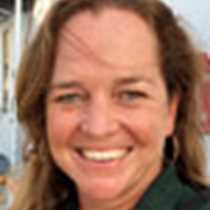Santa Cruz Island
The colonization of the Galapagos by human beings occurred very late – just over a century ago – and had a very slow start before undergoing a sudden explosion in the 1980s and 1990s. The archipelago was officially discovered in 1535 by Fray Thomas de Berlanga, a Spanish bishop sailing from Panama to Peru to settle conflicts between the conquistadores when his ship was caught in the doldrums and transported here by the Equatorial Current. The inhospitable nature of the archipelago was a powerful deterrent to settlement, and for about four centuries the islands were used merely as an operational and logistical base – first by privateers and pirates at war with the Spanish and Portuguese, and subsequently by whalers and fur sealers. This is reflected in the fact that the islands have had several unofficial names over time – Santa Cruz, for example, has had a total of 10 names, of which the predominant early English name was Indefatigable.
The islands were claimed by the country of Ecuador in 1832, just 3 years before Darwin passed through, and another dark chapter in their dramatic history began with the establishment of a series of penal colonies. In the beginning of the 20th century, to cement a presence on the archipelago, the Ecuadorian government enticed settlers by promising them all the land they wanted here, and thus colonization slowly began. The population soared from merely 2000 inhabitants in 1997 to about 30,000 in 2004, spurred by the lucrative sea cucumber fishery and the start of a promising tourism industry; a growth that has only just began to plateau thanks to the strict immigration measures taken by the government.
After a couple of days spent in pristine National Park territory and a pleasant night’s sailing, we dropped anchor in Academy Bay, on the southern shore of Santa Cruz, and disembarked in the bustling port city of Puerto Ayora, the largest human settlement in Galapagos with over 15,000 inhabitants. After visiting the famous Charles Darwin Research Station and the giant tortoise breeding program, we had the opportunity to stroll down Charles Darwin Avenue and enjoy the picturesque waterfront – in particular the small fishing market at Pelican Bay, where pelicans and sea lions compete for the fish scraps thrown out by the local fishermen. We then left the arid coastal zone behind and drove into the highlands of this large island, to experience completely different climate and vegetation, perfect conditions for the agriculture started by early settlers. Two of the predominant crops here are sugar cane and coffee, and after lunch at a restaurant with stunning views of the verdant highlands and surrounding seas, with other islands faintly visible in the distance, we visited a working farm belonging to the Cabrera Family. Having moved to the islands almost 50 years ago, this family showed us how they traditionally obtained the various products given by these crops, such as panela (a raw kind of sugar) and caña, the local spirit. Coupled with plenty of wildlife sightings that included various species of finch and the largest of the Galapagos giant tortoises in the wild, it was truly a very different day, yet utterly fascinating and an integral part of the complexity that makes up Galapagos.
Once back on board, our experience of local culture continued as the predominant Galapagos band and dance group, with strong Andean influence but many original touches, came to regale us with songs and dances that had us up and joining in despite the long day we just had.




